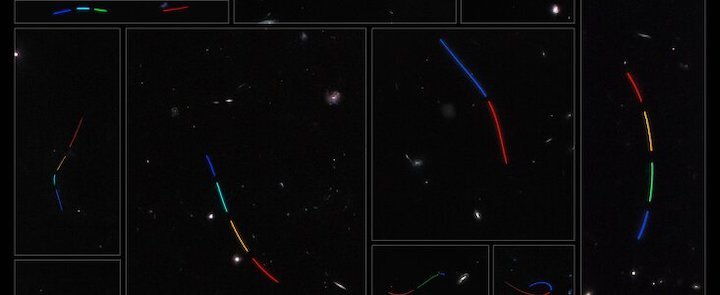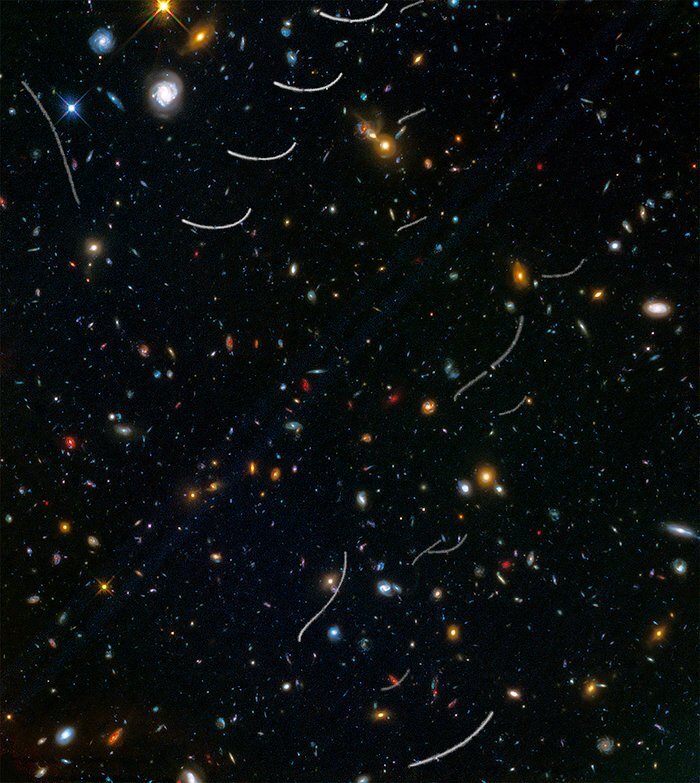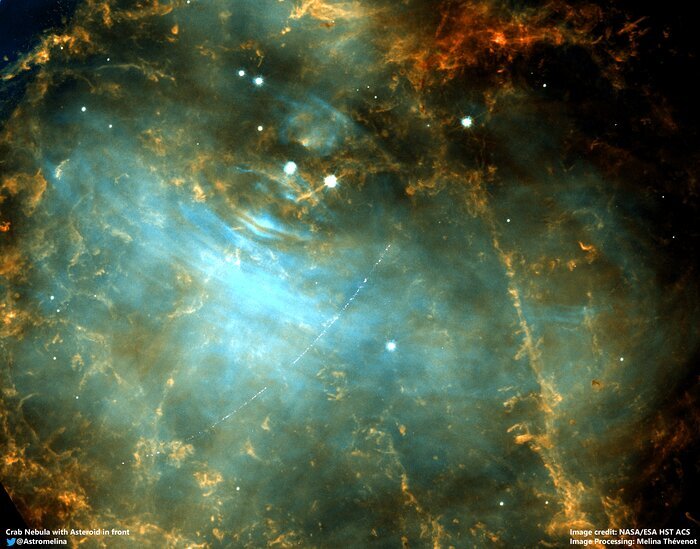9.05.2022

Combining artificial intelligence with many keen human eyes, astronomers have found 1701 new asteroid trails in archival data from the NASA/ESA Hubble Space Telescope, consisting of more than 37 000 images that span two decades. The project reflects both Hubble’s value to scientists as an asteroid hunter and how the public can effectively contribute to citizen science initiatives.
On International Asteroid Day in June 2019 an international group of astronomers launched the Hubble Asteroid Hunter, a citizen science project to identify asteroids in archival Hubble data. The initiative was developed by researchers and engineers at the European Science and Technology Centre (ESTEC) and the European Space Astronomy Centre’s Science Data Centre (ESDC), in collaboration with the Zooniverse platform, the world’s largest and most popular citizen science platform, and Google.
The astronomers collectively identified more than 37 000 composite images taken between April 2002 and March 2021 with Hubble’s ACS and WFC3 instruments. With a typical observation time of 30 minutes, asteroid trails appear as curved lines or streaks in these images. Over 11 400 members of the public classified and analysed these images. More than 1000 trails were identified, providing a training set for an automated algorithm based on artificial intelligence. The combination of citizen science and AI resulted in a final dataset containing 1701 trails in 1316 Hubble images. Project participants also tagged various other astronomical objects, such as gravitational lenses, galaxies and nebulae. Volunteers discussed their findings and sought assistance from scientists and other participants via the project’s forum.
Roughly one third of the asteroid trails seen could be identified and attributed to known asteroids in the International Astronomical Union’s Minor Planet Centre, the largest database of Solar System objects. This left 1031 unidentified trails that are faint and likely to be smaller asteroids than those detected in ground-based surveys. The vast majority of these asteroids are expected to be located in the Main Belt between Mars and Jupiter, where asteroids of such small size are as yet poorly studied. These trails could give the astronomers insightful clues about the conditions in the early Solar System when the planets were forming.
The project highlights Hubble’s potential to image faint, previously unknown asteroids and represents a new approach to finding asteroids in astronomical archives spanning decades, which may be effectively applied to other datasets. In addition to illustrating Hubble’s value as an asteroid hunter, it also reinforced the public’s interest in contributing towards scientific endeavours and the value of citizen science efforts.
Next, the project will explore the 1031 streaks of previously unknown asteroids to characterise their orbits and study their properties, such as their sizes and rotation periods. As most of these asteroid streaks were captured by Hubble many years ago, it is not possible to follow them up now to determine their orbits [1]. However, using Hubble, astronomers can use the parallax effect to determine the distance to the unknown asteroids and put constraints on their orbits. As Hubble moves around the Earth, it changes its point of view while observing the asteroid which also moves on its own orbit. By knowing the position of Hubble during the observation and measuring the curvature of the streaks, scientists can determine the distances to the asteroids and estimate the shapes of their orbits. Some of the longer Hubble observations facilitate the measurement of a light curve [2] for the asteroids, from which the team can measure their rotation periods and infer their shapes.
Abell 370 Parallel Field with Asteroids

Some asteroids from within our Solar System have photobombed deep images of the Universe taken by the NASA/ESA Hubble Space Telescope. These asteroids reside, on average, only about 260 million kilometres from Earth — right around the corner in astronomical terms. Yet they've horned their way into this picture of thousands of galaxies scattered across space and time at inconceivably farther distances.
This Hubble photo of a random patch of sky is part of the Frontier Fields survey. The colourful image contains thousands of galaxies, including massive yellowish ellipticals and majestic blue spirals. Much smaller, fragmentary blue galaxies are sprinkled throughout the field. The reddest objects are most likely the farthest galaxies, whose light has been stretched into the red part of the spectrum by the expansion of space.
Intruding across the picture are asteroid trails that appear as curved or S-shaped streaks. Rather than leaving one long trail, the asteroids appear in multiple Hubble exposures that have been combined into one image. Of the 20 total asteroid sightings for this field, seven are unique objects. Of these seven asteroids, only two were earlier identified. The others were too faint to be seen previously.
The trails look curved due to an observational effect called parallax. As Hubble orbits around Earth, an asteroid will appear to move along an arc with respect to the vastly more distant background stars and galaxies. The motion of Earth around the Sun, and the motion of the asteroids along their orbits, are other contributing factors to the apparent skewing of asteroid paths.
All the asteroids were found manually, the majority by "blinking" consecutive exposures to capture apparent asteroid motion. Astronomers found a unique asteroid for every 10 to 20 hours of exposure time.
The Frontier Fields program is a collaboration among several space telescopes and ground-based observatories to study six massive galaxy clusters and their effects. Using a different camera, pointing in a slightly different direction, Hubble photographed six so-called "parallel fields" at the same time it photographed the massive galaxy clusters. This maximised Hubble's observational efficiency in doing deep space exposures. These parallel fields are similar in depth to the famous Hubble Deep Field, and include galaxies about four-billion times fainter than can be seen by the human eye.
This picture is of the parallel field for the galaxy cluster Abell 370. It was assembled from images taken in visible and infrared light. The field's position on the sky is near the ecliptic, the plane of our Solar System. This is the zone in which most asteroids reside, which is why Hubble astronomers saw so many crossings. Hubble deep-sky observations taken along a line-of-sight near the plane of our Solar System commonly record asteroid trails.
Asteroid in the Crab Nebula (M1)

Citizen scientist spots main-belt asteroid 2001 SE101 passing in front of the Crab Nebula (M1). Colour composition using HST ACS/WFC F550M and F606W filters.
Credit:
ESA/Hubble, M. Thévenot (@AstroMelina)
Notes
[1] Compared to the bright stars and Solar System planets which Hubble regularly tracks, most of the asteroids are very faint and move very quickly, making them difficult to spot. As they will have drifted a very long way since first being seen, the likelihood that predictions of their orbits will be exact enough to capture the object in Hubble’s precise field of view is too slim.
[2] A light curve is a plot of the amount of light seen from an object over a period of time. As the amount of light rises and falls, it traces out a curve, which tells astronomers when and by how much the object’s brightness changes. This can tell them about some of the object’s properties. In this case, as the small, irregularly-shaped asteroids rotate and tumble in space, they expose larger or smaller surfaces to the Sun, and the amount of light reflected towards us changes.
Quelle: ESA
